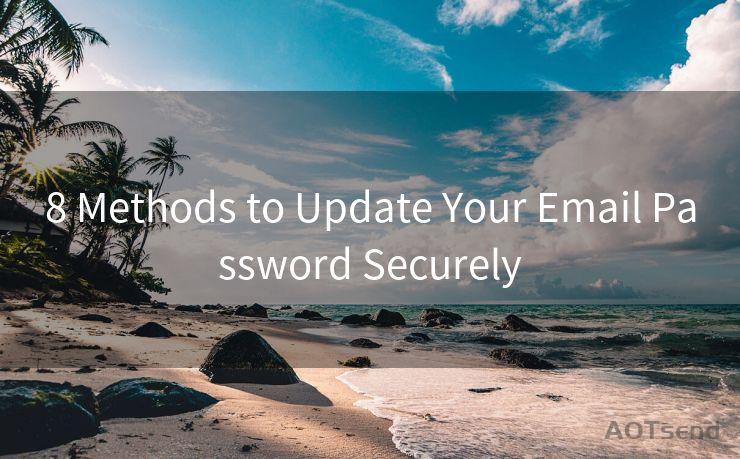8 Methods to Update Your Email Password Securely




In the digital age, keeping your online accounts secure is paramount. Your email account, being a gateway to much of your personal information, deserves special attention. Updating your email password securely is a crucial step in maintaining your online safety. Here are eight methods to help you do so:
1. Use a Strong and Unique Password
When choosing a new password for your email, make sure it's both strong and unique. Avoid common phrases or patterns. A strong password should be a mix of uppercase letters, lowercase letters, numbers, and special characters.
2. Enable Two-Factor Authentication
Two-factor authentication adds another layer of security to your email account. Even if someone guesses or steals your password, they'll still need a second factor, like a code sent to your phone, to access your account.
3. Don't Reuse Passwords
Reusing passwords across multiple accounts increases the risk of a breach. If one account gets hacked, all your other accounts using the same password are vulnerable. Use a password manager to help you generate and store unique passwords for each account.
4. Change Your Password Regularly
Regularly updating your password reduces the risk of it being guessed or stolen. Set a reminder to change your password every few months.
5. Avoid Public Computers for Password Changes
Public computers, like those in libraries or internet cafes, might be compromised. It's safer to change your password from a trusted device, like your personal computer or smartphone.
6. Check for HTTPS
When changing your password, ensure the website you're on uses HTTPS. This ensures that your information is encrypted and secure while being transmitted.
7. Be Wary of Phishing Scams
Scammers often send emails pretending to be from your email provider, asking you to update your password. Always check the email address and link carefully before clicking. It's safer to go directly to your email provider's official website to change your password.
8. Monitor Your Account Activity
Regularly check your email account's activity log to see if there's any unusual activity. This can alert you to potential breaches early on.
In Conclusion
Updating your email password securely is essential in today's digital landscape. By following these eight methods, you can significantly reduce the risk of your account being hacked. Remember, security is an ongoing process, not a one-time task. Stay vigilant and keep your online accounts safe.
🔔🔔🔔
【AOTsend Email API】:AOTsend is a Managed Email Service for sending transactional emails. Support Email Types: reminders, authentication, confirmations, notifications, verification codes, invoices, password resets, account activations, billing statements, two-factor authentication (2FA), and one-time passwords (OTP) emails, etc. $0.28 per 1000 Emails. 99% Delivery, 98% Inbox Rate.
You might be interested in:
Why did we start the AOTsend project, Brand Story?
What is a Managed Email API, How it Works?
Best 25+ Email Marketing Platforms (Authority,Keywords&Traffic Comparison)
Best 24+ Email Marketing Service (Price, Pros&Cons Comparison)
Email APIs vs SMTP: How they Works, Any Difference?

By implementing these "8 Methods to Update Your Email Password Securely," you're taking a proactive step towards protecting your personal information and maintaining your online privacy.




Scan the QR code to access on your mobile device.
Copyright notice: This article is published by AotSend. Reproduction requires attribution.
Article Link:https://www.mailwot.com/p803.html



